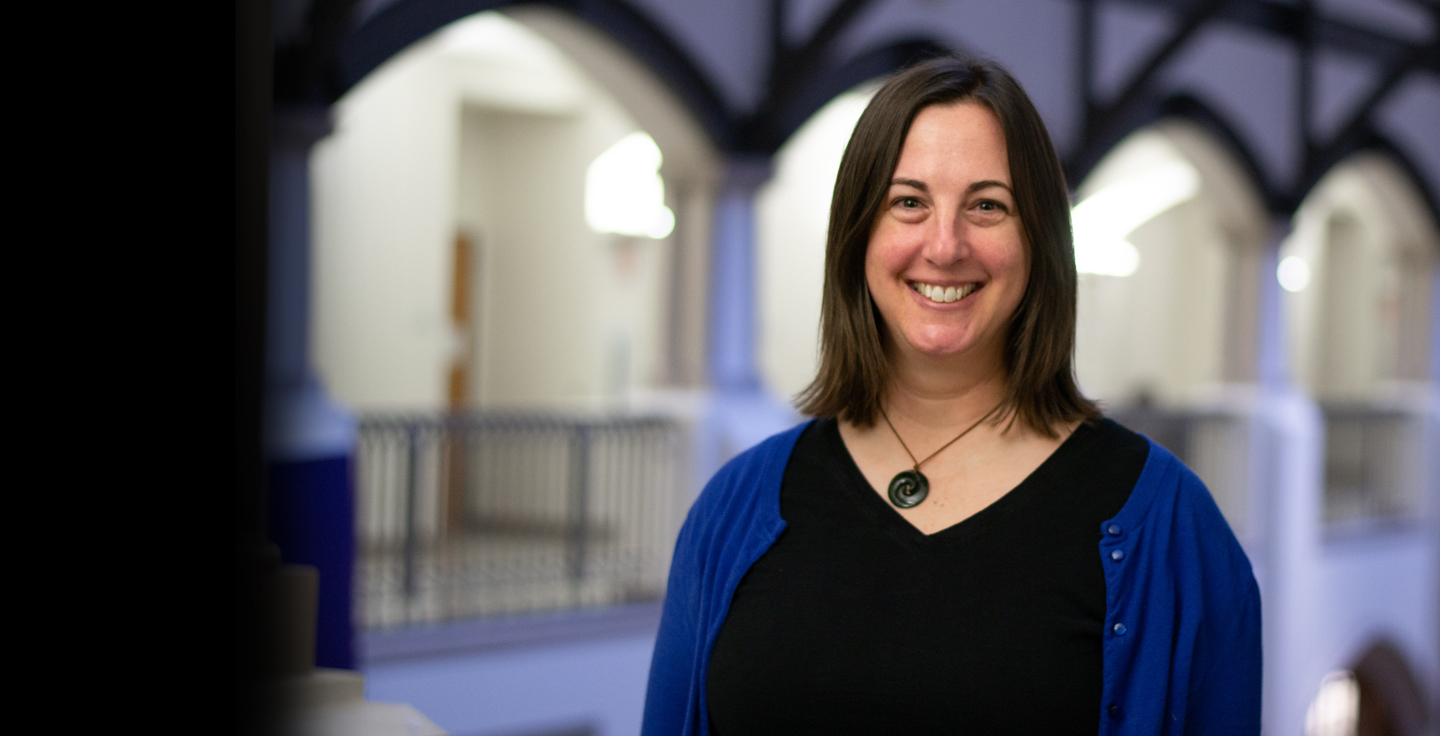Going to the doctor isn’t exactly most people’s idea of fun, but for people with motor-neuron diseases and others who use assistive technology to communicate, it can be much more than a minor inconvenience. Packing and transporting themselves and their gear can be an hours-long ordeal.
When the COVID-19 pandemic came along, it prompted many health-care providers to embrace a helpful tool for people who have trouble moving and communicating: telehealth. After insurers temporarily relaxed their rules and covered visits over video, patients saved a great deal of time and fatigue, while providers saw an increase in appointments from otherwise reluctant patients, iSchool Ph.D. candidate Erin Beneteau (pictured above) found in a recent study.
“There were huge benefits to telehealth, and I’m not sure that we would have found out any of that if COVID hadn’t happened,” Beneteau said.
Beneteau and iSchool Professor Wanda Pratt teamed with Ann Paradiso of Microsoft Research on the study of telehealth use among clinicians and patients who use augmentative and alternative technologies to communicate. The researchers found that, despite some accessibility issues, telehealth is an essential service that should be an option for ongoing health care. Their findings were published in the March issue of JAMIA, the Journal of the American Medical Informatics Association.
Among the six patients in the study, most were being treated for ALS, also known as Lou Gehrig’s Disease, and all were unable to communicate using their voice. Beneteau said the pandemic presented an interesting opportunity to see how such patients were using telehealth services, which rely on verbal communication. Patients found it less fatiguing to visit their doctors remotely than in person, and those who were vulnerable to infection found that it eased their minds to stay at home.
“What we found was that telehealth is extremely helpful and a necessary option for people who have complex health needs and for people who use a variety of communication modalities,” said Beneteau, who worked as a speech and language pathologist before coming to the iSchool and still holds her clinical credentials.
“This work heightens awareness within the biomedical and health informatics community about how patients with disabilities could be better supported by telehealth technologies.”
Providers also benefitted from seeing their patients more often, and those in rural areas who travel to patients’ homes were able to save time and transportation costs while avoiding the health risks associated with visiting people in person during the pandemic.
The researchers found some downsides and limitations to telehealth. Some patients may lack the necessary technical knowhow, or they may not have the technology and bandwidth speed needed for a smooth telehealth visit. For clinicians, it’s difficult to get a holistic view of what’s going on with a patient physically without being in the same room. Beneteau said health-care providers saw telehealth as a beneficial tool to have in their toolbox for non-diagnostic check-ins and consultations, but not as the way to comprehensively care for a patient.
Pratt, whose research focuses on how technology can help meet patients’ needs, said she hopes the paper encourages practitioners to continue to offer telehealth options and prompts policymakers to remove regulatory barriers.
“This work heightens awareness within the biomedical and health informatics community about how patients with disabilities could be better supported by telehealth technologies,” Pratt said. “We hope this work will be used to shape both policy choices to continue support for telehealth services and for design choices to improve telehealth services to better support people with disabilities.”
In a second paper published in the American Medical Informatics Association’s conference proceedings, the same researchers looked at telehealth from a different perspective — that of children. Using a co-design approach, they worked with kids ages 9 to 13 to explore young people’s ideas about future telehealth technologies.
Asked to design telehealth technologies that could help a disabled pediatric patient, the children came up with several creative, futuristic ideas. Suggestions included a robot doctor, a wearable jacket that could transmit information to a doctor, or a handheld device that could obtain diagnostic information from patients — like Dr. McCoy’s tricorder in “Star Trek.”
Some of the kids’ ideas aren’t that far from becoming reality. Some basic diagnostic tools are already available on Apple Watches, and UW researchers have been developing a way to measure people’s pulse and respiration using a smartphone. And one of Beneteau’s favorite suggestions — a YouTube channel tailored to children who use assistive technology — is already possible.
“If we think about how this next generation of patients is going to find information, they’re more used to video consumption,” Beneteau said. “Telehealth could be geared more for that type of format where there’s a built-in video interaction, whether it’s synchronous or asynchronous.”
Beneteau said the kids displayed a lot of empathy and concern for people’s ownership of their health information — something professional designers could take to heart.
“They designed with clear, obvious control to send information to the doctor or not,” Beneteau said. “I think that’s something that people designing health sensing technologies may not be thinking about as explicitly.”
